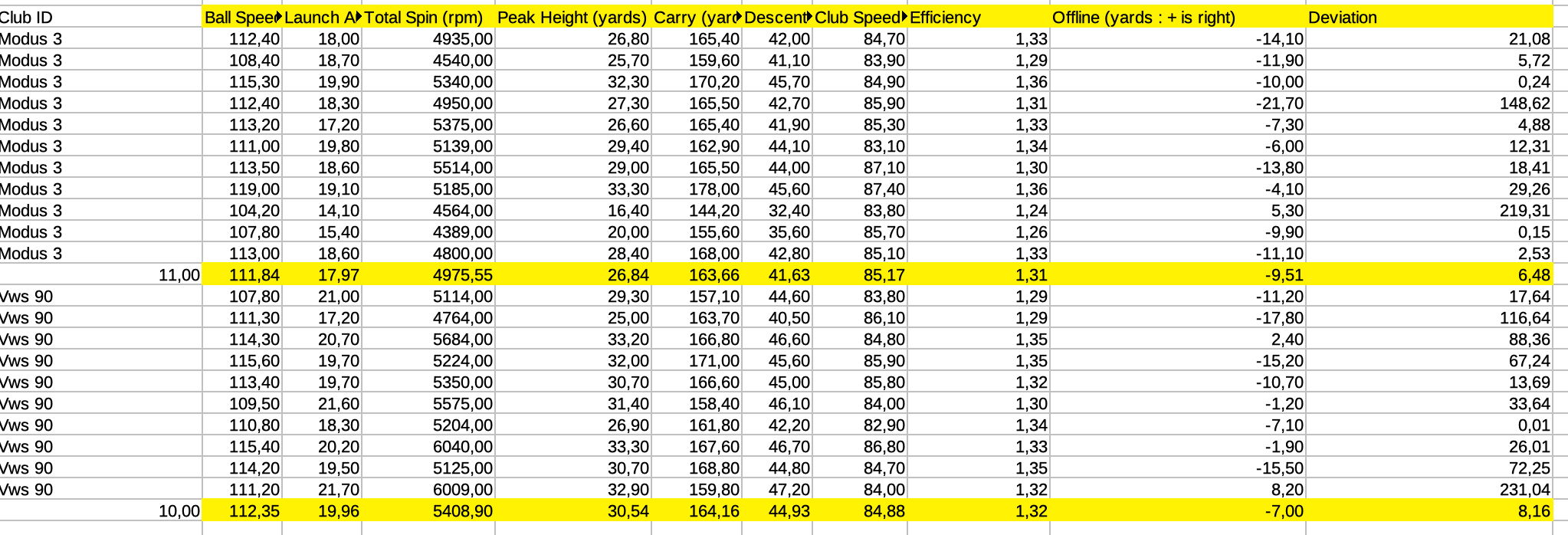Kickpoint in comparison: Shimada VWS90 vs. Nippon Modus 3
In this test we look at two very different shafts, the Shimada VWS 90 and the Nippon Modus 3 Tour 105 - both in Regular. At first glance two very similar shafts in terms of flex and weight. But the difference is in the kick point. The Kick-Point indicates the bending point of the shaft, simply speaking. This is very low in the VWS and very high in the Modus 3, almost in grip area. We see very well in the test what this means for the ball flight.
Our setup
We took a player who swings very constantly with 85mph and hits the ball cleanly and evenly. The Miura CB-1008 was used as the club head.
Shaft 1: Modus 3 Tour 105 in Regular by Nippon - Kickpoint in grip
Shaft 2: VWS 90 in Regular by Shimada - Kickpoint far below
Ball speed
Even if some manufacturers would like to sell it that way, the shaft has only little influence on the ball speed. Also in this comparison the difference is only marginal and rather due to the minimally better hit balls with the VWS (smash factor 1.31 vs. 1.32). In this respect, we cannot prefer a shaft.
Launch Angle, altitude and landing angle
However, the Launch Angle, i.e. the angle at which the ball leaves the club face, becomes interesting. This is 17.97 for Modus and 19.96 for VWS. That's a difference of 2° and a lot for a 6 iron.
This is also to be expected, because a shaft with a low kick point ensures a better or easier launch.
The flight altitude is correspondingly higher with the VWS, at least almost 4m higher. This is also shown 1:1 in the landing angle which is more than 3° higher with the VWS.

Spin
The spin is also significantly higher with the VWS than with the Modus, namely 5400 vs. 4800.
Deviation and direction control
In principle, statements in this respect are always difficult and one would have to evaluate significantly more balls in order to obtain reliable results. Modus 3 is a bit better or more accurate in this respect. But this is also quite logical if you consider that the spin is lower and therefore also lateral flights like in a draw or fade are not as strong as in a VWS with more spin.
The result: Modus 3 vs. VWS 90
All the assumptions have been more than clearly confirmed and we can summarise them as follows:
A shaft with a low kickpoint like the VWS is useful if:
- the player wants a higher launch and therefore more altitude
- the player is looking for a steeper landing angle
- the spin is to be increased
On the other hand, a Modus 3 shaft makes sense when:
- the launch and altitude should be kept low
- the landing angle is steep enough
- the spin is high enough or rather should be minimized
One should also note that the carry length of both shafts is practically identical. This is quite interesting considering the different flight paths. It is to be expected, however, that the ball behaves differently after landing and is easier to control with the VWS (because of the higher landing angle and more spin).

